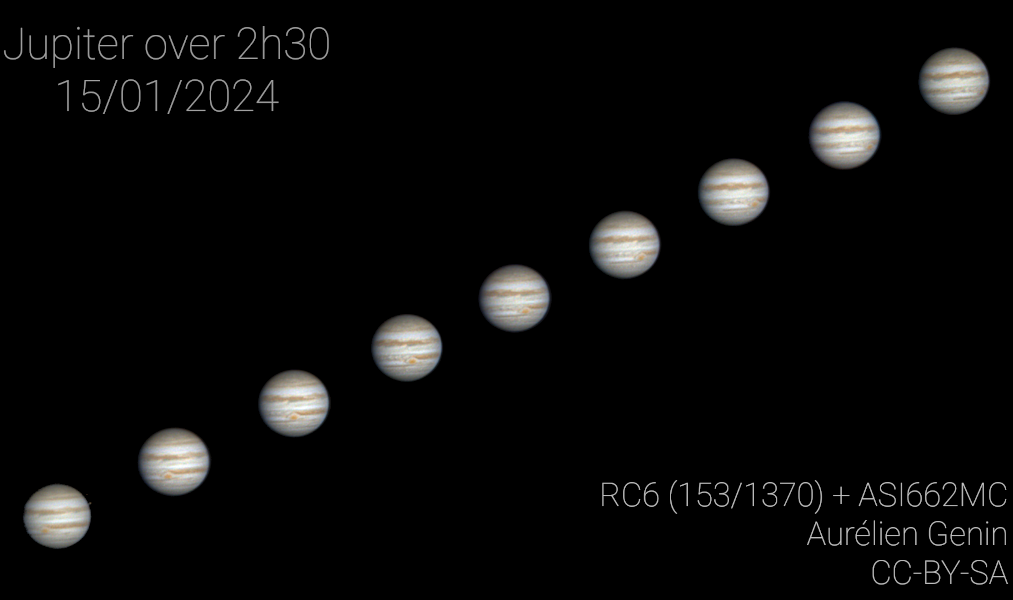2024年1月19日
Jupiter over 2 Hours and 30 Minutes
Image Credit & License: Aurélien Genin
Explanation: Jupiter, our Solar System’s ruling gas giant, is also the fastest spinning planet, rotating once in less than 10 hours. The gas giant doesn’t rotate like a solid body though. A day on Jupiter is about 9 hours and 56 minutes long at the poles, decreasing to 9 hours and 50 minutes near the equator. The giant planet’s fast rotation creates strong jet streams, separating its clouds into planet girdling bands of dark belts and bright zones. You can easily follow Jupiter’s rapid rotation in this sharp sequence of images from the night of January 15, all taken with a camera and small telescope outside of Paris, France. Located just south of the equator, the giant planet’s giant storm system, also known as the Great Red Spot, can be seen moving left to right with the planet’s rotation. From lower left to upper right, the sequence spans about 2 hours and 30 minutes.
Tomorrow’s picture: boostback burn
2小时30分钟期间的木星
影像提供与授权: Aurélien Genin
说明: 木星是太阳系最庞大的气态巨行星,自转速度也是最快,不到10小时就自转一圈。不过,这颗气态巨行星的自转与固态物体有别。木星极区的一天约为9小时56分钟,而在赤道附近则缩短为9小时50分钟。这颗巨行星的快速自转产生了强大的喷射气流,将其云层分隔成环绕行星的暗带和亮区。在这幅1月15日晚、用相机及小望远镜摄于法国巴黎近郊的清晰序列影像里,可以轻易的用来追踪木星的快速自转。这颗巨行星位于赤道以南的庞大风暴系统(大红斑),随着它进行自转,从左向右移动。这个从左下角向右上角伸展的影像序列,整个的时间跨度约为2小时30分钟。
明日的图片: boostback burn



